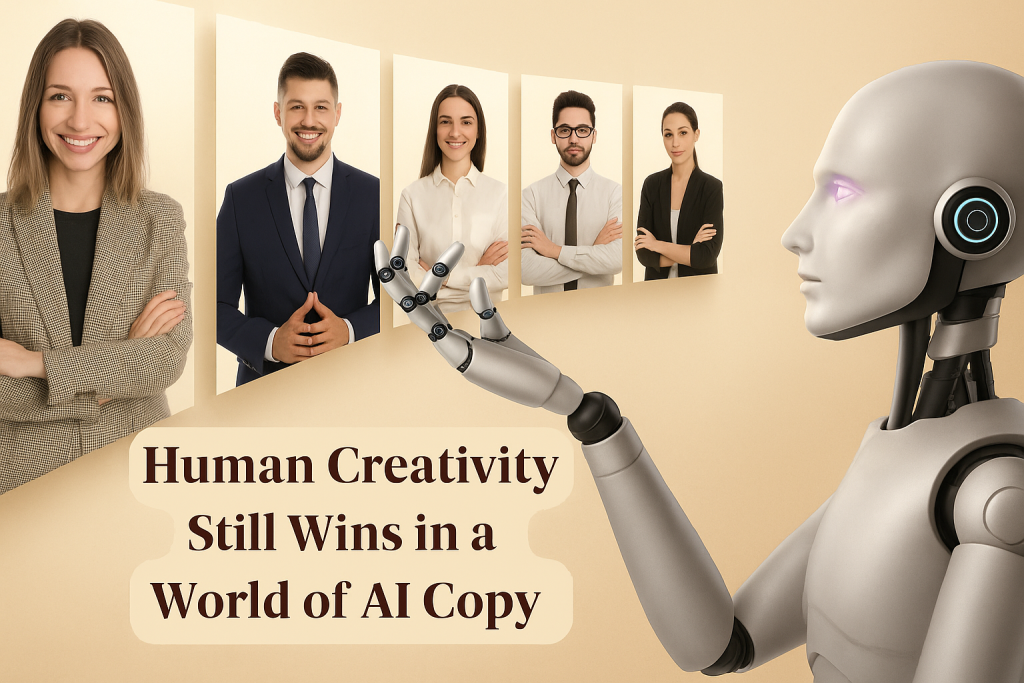
We’re living in an era where content can be created in seconds. Type in a few prompts, click a button, and you have paragraphs that sound polished enough to post. But while AI can generate copy, only humans can create connection.
A client recently told me, “I tried using AI for a marketing campaign, but it didn’t sound like me.” I reviewed the content: it was clean, accurate… and completely lifeless. Once I rewrote it with personality, purpose, and the vision of what their audience was looking for, their message finally connected.
That’s the issue in a nutshell. Technology can assemble words, but it can’t capture your voice.
When Everything Starts to Sound the Same
AI tools can produce content faster than ever—blogs, captions, sales pages, you name it. And yes, they can help with structure, speed, and idea generation. But here’s the problem: the result often feels the same. Familiar phrases. Predictable patterns. Polite, polished… and forgettable.
AI doesn’t know what it means to stay awake all night wrestling with a decision, feel the heart palpitations of a risky situation, or celebrate the victory (and maybe, breathe a sigh of relief) of finally landing a game-changing client. It can imitate emotion but not experience it. And that lack of depth is exactly why human creativity still wins.
The Spark Only Humans Bring
As a copywriter, I’ve seen time and again how a single line—crafted with intention—can make someone stop, nod, and think, “That’s exactly how I feel.” That’s not a data-driven formula; it’s intuition and empathy at work.
Human creativity draws from lived experience, personal insight, and perspective. It weaves humour, honesty, and vulnerability into language that feels real. It builds trust because readers sense authenticity behind the words. That’s something no algorithm can replicate. And that brings me to something I’ve noticed lately in the rush to label what’s “real” writing versus what’s not.
My Pet Peeve
I’ve been writing for businesses for nearly three decades… and a decade before that, I was publishing my works in children’s and parenting magazines. And for all those years, I’ve used the em dash with care. You know that extra-long dash (—) that makes you pause, add emphasis, or create a shift in thought. As a colleague recently said, “the em dash is punctuation with feeling.”
However, people are now screaming that the em dash is a sign of AI-generated content. But that simply is not true. In reality, AI learns from humans, and humans have used the em dash for centuries. It’s annoying when someone makes a blanket statement that if there is an em dash in the content, it’s AI, when in reality, there’s a skilled writer who understands the rhythm of words.
Why It Matters for Business
In business, words are more than filler between graphics; they’re your bridge to connection. Authentic writing builds credibility and invites conversation. It shows your audience you understand their challenges because you’ve been there, too.
People buy from people. They don’t want perfect sentences; they want genuine connection. They want your story, or the story behind your success (and failures). When your copy reflects heart, clarity, and conviction, it resonates long after the scroll.
The Future Belongs to the Creatives
AI can help us work smarter, but it can’t replace imagination, insight, or strategy. The future of content isn’t about choosing between human or machine—it’s about how we use technology without losing our humanity.
So, keep writing. Keep telling your stories. Keep showing up with your unique voice and perspective.
Your words—crafted with care and authenticity—will always stand out. Because no algorithm can match the creativity, intuition, and heart behind a human writer’s words.


